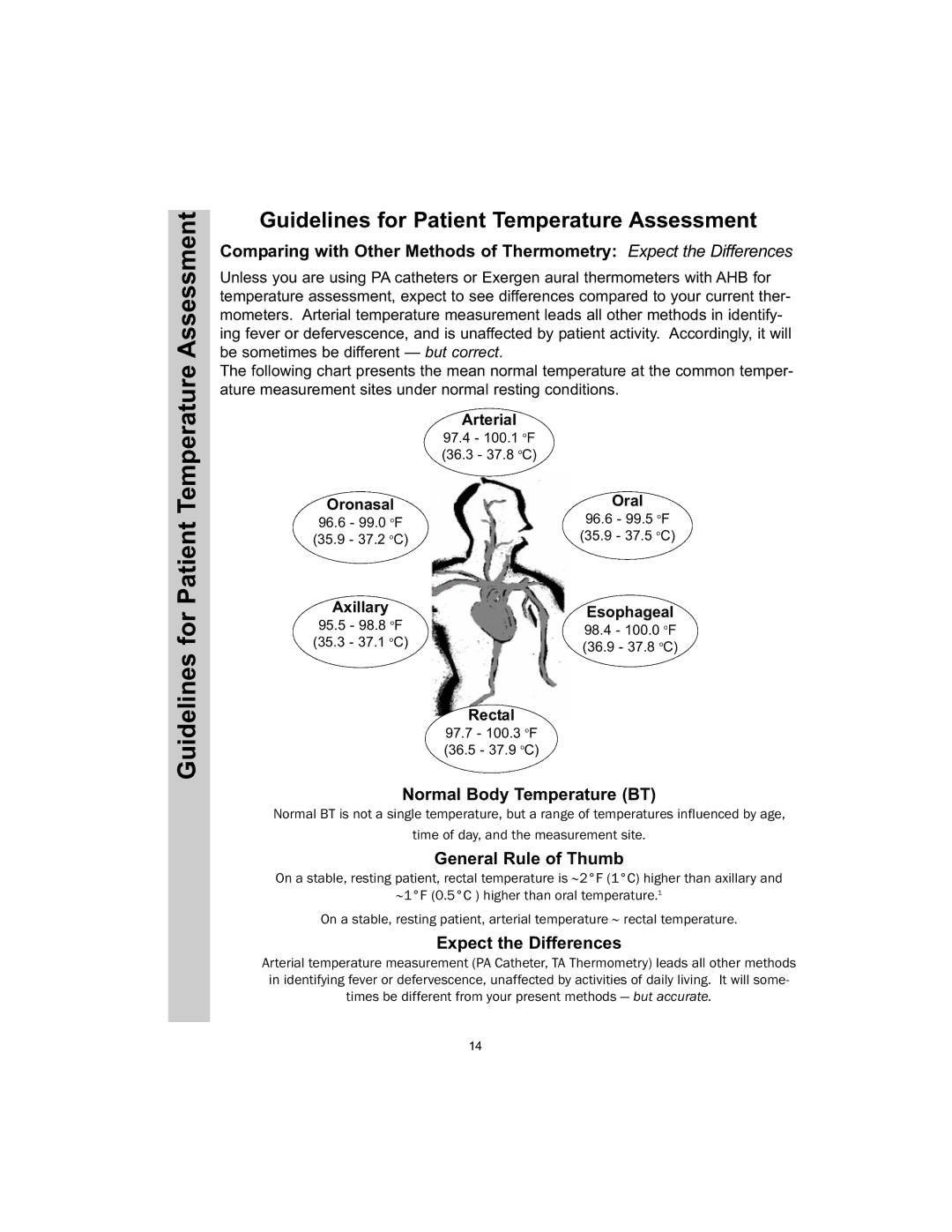
Guidelines for Patient Temperature Assessment
Guidelines for Patient Temperature Assessment
Comparing with Other Methods of Thermometry: Expect the Differences
Unless you are using PA catheters or Exergen aural thermometers with AHB for temperature assessment, expect to see differences compared to your current ther- mometers. Arterial temperature measurement leads all other methods in identify- ing fever or defervescence, and is unaffected by patient activity. Accordingly, it will be sometimes be different — but correct.
The following chart presents the mean normal temperature at the common temper- ature measurement sites under normal resting conditions.
Arterial
97.4- 100.1 oF
(36.3 - 37.8 oC)
OronasalOral
96.6 - 99.0 | o | F | 96.6 - 99.5 oF |
|
| ||
(35.9 - 37.2 | o | C) | (35.9 - 37.5 oC) |
|
|
Axillary | Esophageal | ||||
95.5 - 98.8 oF | |||||
98.4 - 100.0 | o | F | |||
(35.3 - 37.1 oC) |
| ||||
(36.9 - 37.8 | o | C) | |||
|
| ||||
Rectal
97.7- 100.3 oF
(36.5 - 37.9 oC)
Normal Body Temperature (BT)
Normal BT is not a single temperature, but a range of temperatures influenced by age,
time of day, and the measurement site.
General Rule of Thumb
On a stable, resting patient, rectal temperature is ∼2°F (1°C) higher than axillary and
∼1°F (0.5°C ) higher than oral temperature.1
On a stable, resting patient, arterial temperature ∼ rectal temperature.
Expect the Differences
Arterial temperature measurement (PA Catheter, TA Thermometry) leads all other methods
in identifying fever or defervescence, unaffected by activities of daily living. It will some-
times be different from your present methods — but accurate.
14
